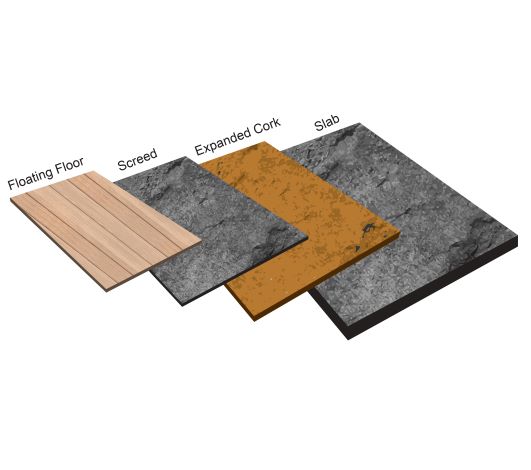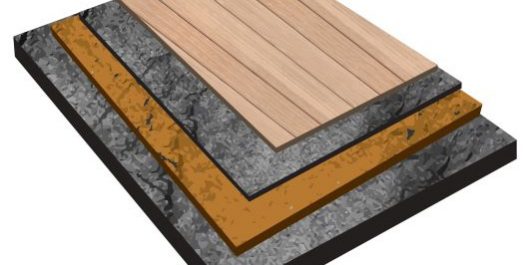Expanded cork is one of the most environmentally forms of insulation and can be used to insulate walls, roofs and flooring. Here we are going to look at how expanded cork (also known as Insulation Cork Board, or ICB)is generally applied for flooring applications using a concrete slab and screed. As well as providing thermal insulation of λ = 0.037 to 0.040 W/m°C or an R value of 3.6 per inch, expanded cork can also provide excellent acoustic insulation (you can see more expanded cork technical data here).
The standard way of using expanded cork for flooring insulation is laying the expanded cork on the slab followed by a screed floor then the final floating floor, tiles etc. Expanded cork will give you excellent mechanical strength and dimensional stability as well as breathability making it the perfect insulation material for this kind of application (not to mention the environmental benefits of expanded cork, given the fact that it is 100% natural and sustainable as well as promoting a unique and valuable ecosystem).

To give an example of the acoustic insulation you will get from using expanded cork for flooring, with a 140mm thick slab, 50mm of expanded cork and a 50mm screed, the acoustic insulation will be ΔLw = 22 dB. The expanded cork of 50mm will provide thermal insulation of K⋅m2/W = 2.5 to prevent thermal bridging between the concrete layers.
Expanded cork has the additional benefits of being very easy to install as it is safe to touch and easy to cut to size as well as being completely additive free. It is also one of the few insulation materials on the planet that is carbon negative because expanded cork is made only from the bark of the cork tree and the tree itself is not damaged by the removal of the bark (it will grow back in 9 years to be harvested again). It is also extremely durable and resistant to rot and mould.
Expanded cork can also be used in a similar way for flat roofing insulation as well as the more traditional usage of expanded cork as wall and sloping roof insulation. Although traditionally expanded cork has been hidden by covering layers, now more architects are making a feature of it and having it exposed on the inside and outside of houses, for which different densities of expanded cork are available.
You can see our prices for expanded cork here and more information about expanded_cork_usage here. Please contact us if you require any further information








